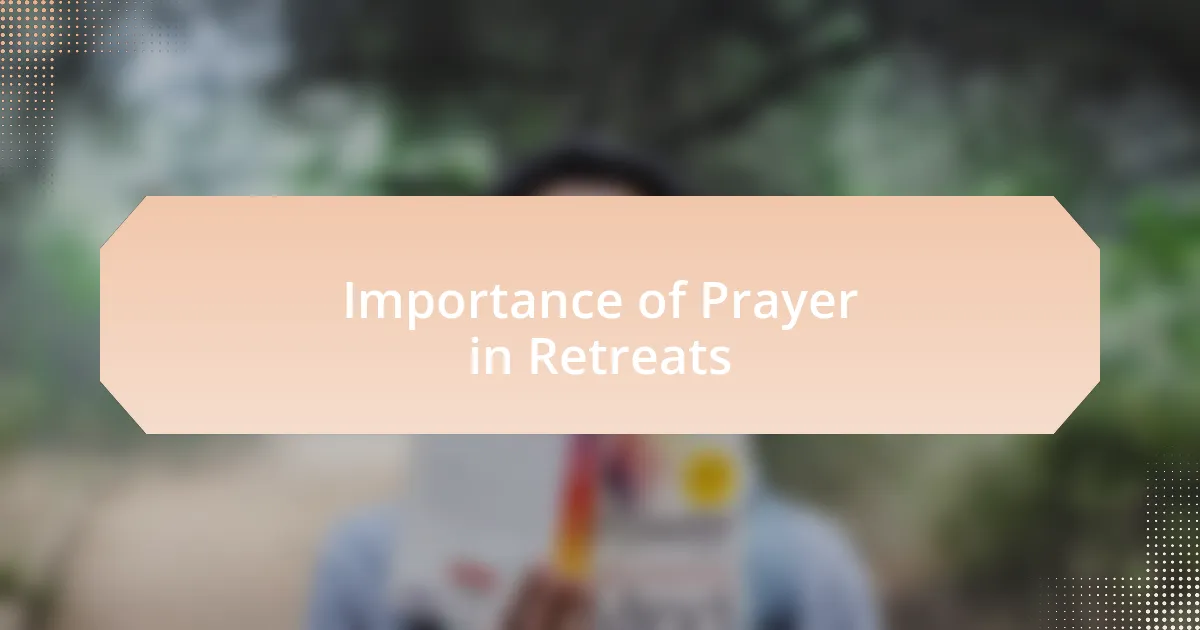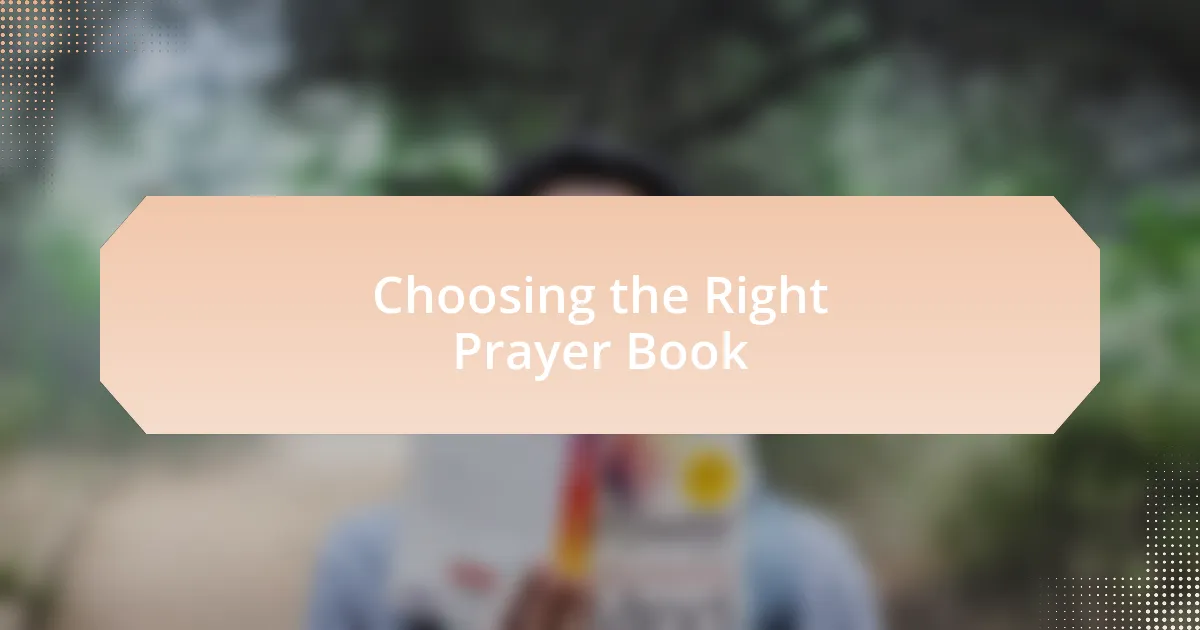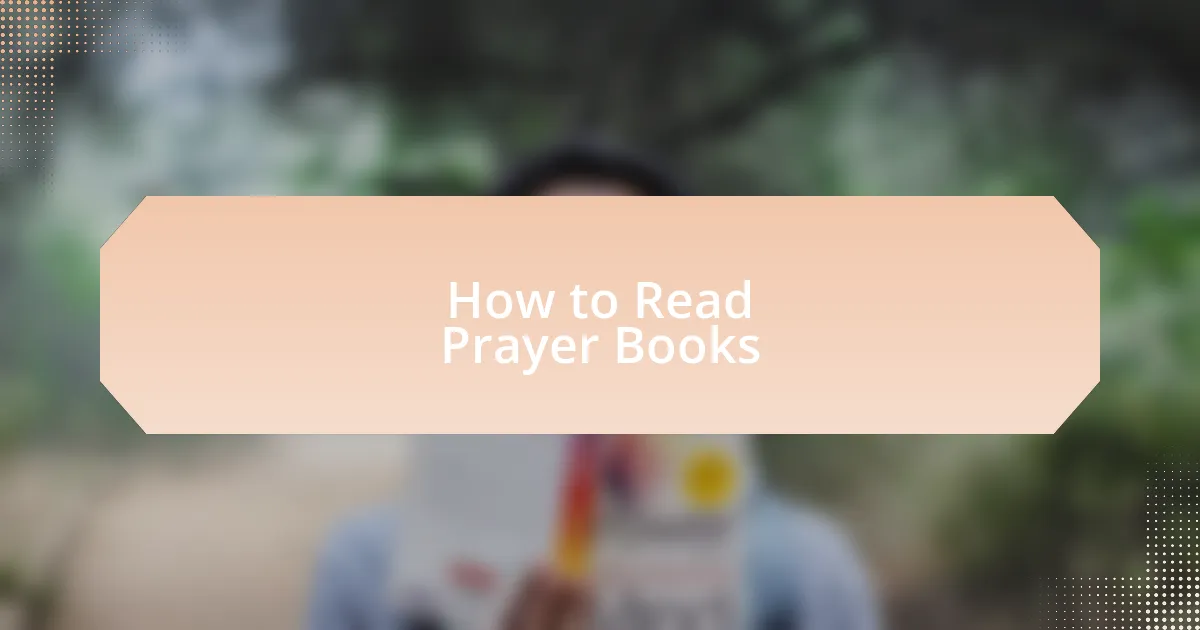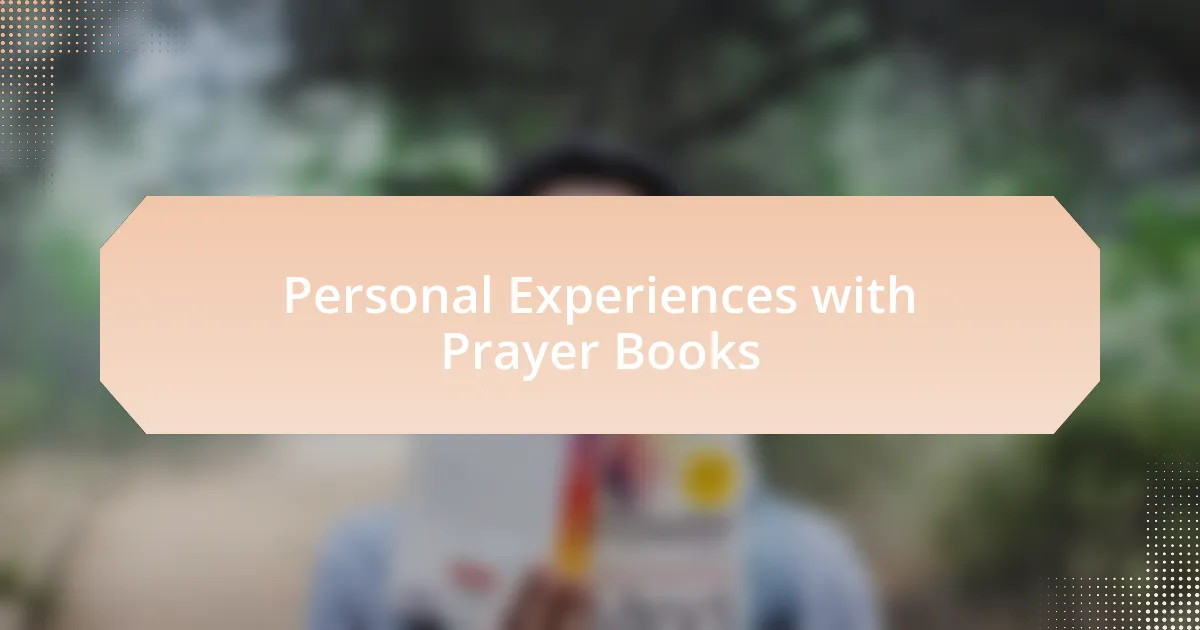Key takeaways:
- Religious books facilitate spiritual growth by providing wisdom and fostering a sense of community among readers through shared insights.
- Prayer during retreats enhances reflection, trust, and mindfulness, creating a deeper connection among participants.
- Choosing a prayer book that resonates personally is crucial for an impactful experience, considering aspects like size, language, and style.
- Engaging with prayer texts through personal reflection and slowing down can lead to deeper insights and emotional healing.

Understanding Religious Books
Religious books serve as a bridge between the sacred and the everyday, inviting readers into a world of contemplation and spiritual growth. I remember the first time I opened a prayer book while sitting under a tree during a retreat. The way the words seemed to resonate with my surroundings made me realize how these texts can guide us in our quest for inner peace.
The depth of wisdom found in religious books often stirs a profound sense of connection within me. Have you ever felt that surge of emotion when reading a passage that seems to speak directly to your heart? I recall poring over a section that beautifully captured my struggles and joys, making me feel understood and less alone on my spiritual journey.
Engaging with these texts isn’t just a solitary experience; it’s a communal one as well. I often share insights from my prayer book with fellow retreat-goers, sparking conversations that lead to rich exchanges of faith and understanding. It’s fascinating how, through sharing our interpretations and experiences, we can uncover layers of meaning that we may not have recognized before.

Importance of Prayer in Retreats
Prayer plays a pivotal role during retreats, acting as a vessel for reflection and connection. I vividly remember one particular retreat where, after spending time in silence, I opened my prayer book and felt an overwhelming wave of clarity wash over me. The prayers not only calmed my restless mind but also helped me confront the deeper issues I had been avoiding.
Additionally, I often find that prayer fosters a unique atmosphere of vulnerability and trust among participants. Have you noticed how sharing a prayer can sometimes break down barriers? During one retreat, as we gathered to recite a heartfelt prayer together, there was a palpable shift in the room. We transformed from mere acquaintances to a community bound by shared intentions and aspirations.
Moreover, the practice of prayer during retreats deepens my capacity for gratitude and mindfulness. One evening, as I reflected on the day’s experiences, I realized that simply acknowledging my blessings through prayer encouraged a deeper appreciation for the present moment. It reminded me of the beauty in simplicity and the importance of being fully present, which is often lost in the busyness of everyday life.

Choosing the Right Prayer Book
Choosing the Right Prayer Book is a deeply personal decision and can significantly influence your retreat experience. I often spend time reflecting on what I truly seek from my prayer book. Do I want structured prayers for guidance, or am I in search of more spontaneous, free-flowing expressions of my thoughts and feelings? When I found my favorite prayer book, it felt like it resonated with my own spiritual journey, offering prayers that spoke directly to my heart.
Another key factor is the size and portability of the prayer book. When I’m on a retreat, I prefer something that fits comfortably in my bag but still feels substantial in my hands. I remember carrying a compact prayer book during a nature retreat; its convenient size allowed me to pull it out during quiet moments by the lake, turning my solitude into a sacred connection with nature and my faith.
Lastly, consider the language and style that resonates with you. Do you enjoy poetic language that stirs emotion, or are you inclined towards clear, straightforward texts? I once struggled with a prayer book that used language too archaic for my taste; I found myself disconnected rather than enriched. Choosing a prayer book that aligns with your personal style not only enhances your experience but often deepens your understanding of the prayers themselves.

How to Read Prayer Books
Reading a prayer book is not just about the words on the page; it’s about how those words resonate within us. I often start by finding a quiet space where I’m free from distractions, allowing myself to be fully present. One retreat, while reading aloud in a still chapel, I found that my voice brought the prayers to life, making each line feel more intimate and real. Have you ever experienced that moment where the act of speaking transforms your understanding?
When navigating through the prayers, I usually let my intuition guide me. Sometimes, a particular prayer captures my attention, so I linger over it, reflecting on its meaning. I recall a time when a simple litany stirred my soul during a group retreat. I realized that slowing down and engaging with the text can unveil deeper insights that I might miss in a hurried approach. Do you take the time to savor the words, or do you rush through them?
Incorporating personal reflections as I read is essential for me. I often jot down thoughts and feelings that arise in the margins or a journal. This practice allows me to connect the prayers to my lived experiences. One time, I scribbled notes beside a prayer of gratitude, and it helped me recognize little blessings I’d overlooked in my daily life. Have you tried capturing those fleeting thoughts during your reading? It can transform the experience from passive reading to active contemplation.

Personal Experiences with Prayer Books
There have been instances during retreats where a prayer book became my sanctuary amidst chaos. One evening, as I sat surrounded by others in meditation, I opened my prayer book and instantly felt a wave of calm wash over me. It was as if I had discovered a hidden treasure that spoke directly to my heart, providing solace in a moment when I needed it most. Have you ever felt that rush of peace from a simple passage?
I remember a particular retreat where I focused on a section dedicated to forgiveness. As I read those words, memories of past grievances surfaced, and I couldn’t help but feel a mix of heaviness and release. Reflecting on those sharings led me to confront my own barriers, allowing the prayers to guide me toward a deeper understanding of compassion. Can you imagine the emotional weight lifting as you process those feelings through prayer?
Sometimes, it’s the unexpected moments that stand out the most. On one retreat, I randomly chose a prayer for guidance. What struck me was how it seemed perfectly aligned with a decision I was grappling with at that time. I felt an overwhelming sense of connection to the divine as I realized my struggle was mirrored in the text. How often do we find direction in the most unlikely places when we’re open to receiving the message?